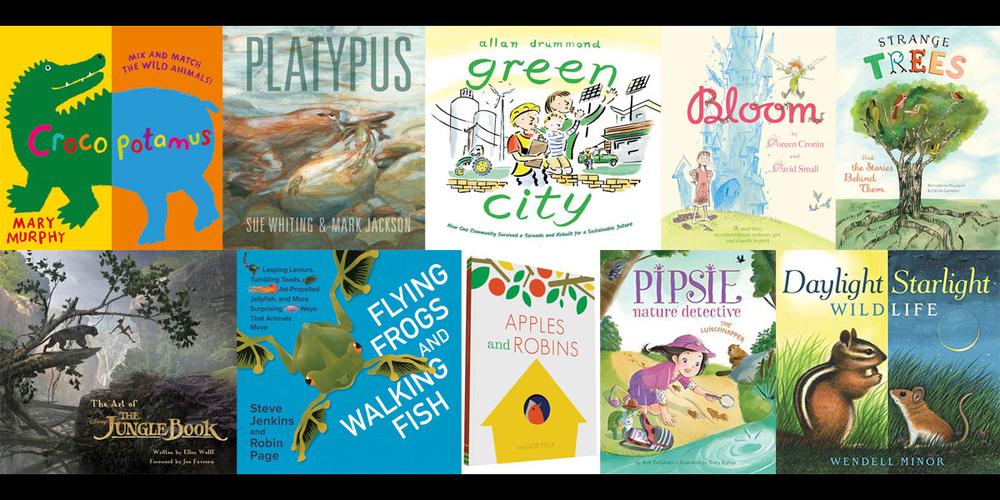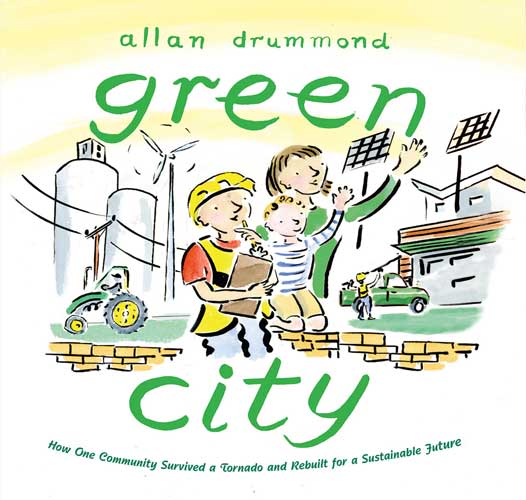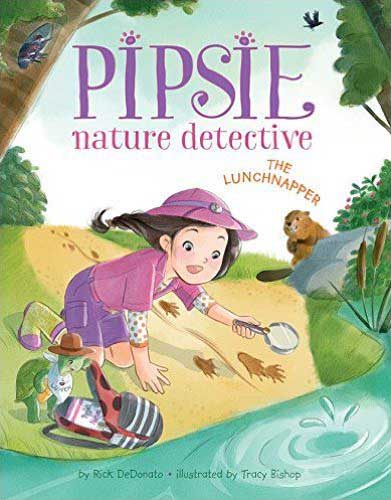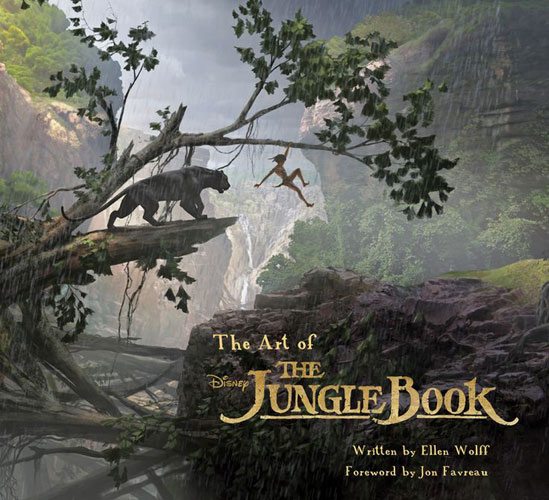In honor of Earth Day this past Friday, today’s Stack Overflow is about nature: plants, animals, and good ol’ mud.
We’ll start with a book that is explicitly about being green. In 2007, a tornado struck the town of Greensburg, Kansas, a small community of about 1,400 people. The town was destroyed: only a few buildings remained, including the huge grain elevators. For some, rebuilding was too costly and they moved away. But for those who stayed, the tornado was an opportunity to go green: tornado-resistant homes, efficient buildings, a wind farm outside town, and a school building designed to be one of the greenest in the country. It took many years and the community is still recovering economically, but the residents made the most of a terrible situation and are trying to position themselves for the future.
Green City is the story of this transition, told from the point of view of a fictional boy whose family survived the tornado. The story is based on facts, with sidebars that explain a little more about things like the school’s design, building a sustainable house, and so on. The book is a picture book format, but has enough details in it that middle grade readers would learn a lot from it, too.
Strange Trees and the Stories Behind Them by Bernadette Pourquié and Cécile Gambini
If you love weird plants, you’ll love this book. It features sixteen different unusual trees, each with its own nickname. The sandbox tree is called the “dynamite tree” for its explosive fruit. Grandidier’s Baobab is the “upside-down tree” for its stumpy branches that look like roots. Each tree has a one-page story told from the point of view of the tree, introducing its particular brand of strangeness. The full-page illustrations are stylized and lovely, and there are also some small detailed illustrations of leaves or fruits or flowers. Note to parents: it’s not necessarily a book you’ll sit down and read all the way through with a wee one, since each tree has its own story.
Flying Frogs and Walking Fish by Steve Jenkins and Robin Page
Jenkins and Page are a husband-wife duo that you’ll see quite often in Stack Overflow, because I just love their books. The cut-paper illustrations are gorgeous, and the books are always filled with fascinating facts. Flying Frogs and Walking Fish is all about the interesting ways that animals move: walking, jumping, swimming, flying, climbing, even rolling. Each section shows several animals with that type of locomotion, illustrated and with a short blurb about the animal. At the back of the book, there’s another list of all of the animals in the book (with thumbnail illustrations) and some more details about where each animal lives and how big it gets.
Pipsie, Nature Detective: The Lunchnapper by Rick DeDonato and Tracy Bishop
Pipsie is on a field trip with her best friend, a turtle named Alfred, and they’re doing a nature scavenger hunt. Each team is tasked to capture photos of various wonders of nature: an animal’s home, animal tracks, and so on. But just before the hunt begins, Pipsie and Alfred discover that their lunchbag is missing! They manage to find various things from the scavenger hunt as they search for their missing lunch, and discover the lunchnapper by the end. There are some fun animal facts at the end of the book about the animals they encountered during their hunt. The story is cute, but kind of silly–Pipsie tries to use Alfred as one of her photo entries and gets disqualified because he’s part of their team and doesn’t count.
Daylight Starlight Wildlife by Wendell Minor
The illustrations in this book alternate between daytime and nighttime, comparing various animals that may occupy the same places at different times. A red-tailed hawk flies during the day, and a barn owl flies at night. The paintings are realistic and each animal has just a simple line of text to accompany it. At the back of the book is a section of facts about all of the animals featured in the book, explaining whether they’re diurnal, nocturnal, or crepuscular.
This one’s a silly board book by Mary Murphy, who has illustrated a number of other books for little kids. The book opens in the middle, allowing you to mix and match the various animals (and their names). Like stripes? Make a zeger. Or how about an elekey, with a prehensile nose and tail? There’s no story here, just a fun way to play with animal pictures.
Platypus by Sue Whiting and Mark Jackson
Speaking of animals that look like they’re silly mash-ups … this book is a beautifully illustrated portrait of the platypus. The story follows a platypus throughout his day–diving for food, hiding from a fox, diving for food (it spends a lot of its day foraging), and grooming. Each page has a section of text that’s the story, and then some smaller text with facts about this amazing animal. Illustrator Mark Jackson also illustrated Bilby (by Edel Wignell), which was featured in a Stack Overflow a couple years ago.
Apples and Robins by Lucie Félix
This book about the changing of seasons (as heralded by apples and robins) has wonderful graphics: cut-outs in the pages transform abstract shapes into apples and robins and ladders and birdhouses. The illustrations are mostly made with simple shapes of flat color. For several of the spreads, there’s something printed on the left page, and a cut-out on the right page, and when you turn the page, the two combine to make a picture. It’s fun to try to guess what the image will look like–some are pretty easy, and some are hard to figure out until you see them. This one has been a favorite at our house.
Bloom by Doreen Cronin and David Small
Bloom is a powerful fairy–she can spin sand into glass and turn weeds into flowers, but she’s also loud and muddy. The people who live in the beautiful glass kingdom got tired of having her around, so she left. But the glass kingdom started falling apart, and so the king tried to bring her back to do her magic. But when the king asked her to show him the magic needed to repair his kingdom, she brought a bucket of mud, which just made the king mad. After a few attempts, eventually a timid little girl named Genevieve is sent to talk to Bloom, and it is she who finally learns the secrets of Bloom’s muddy magic. Yes, this book is (like the ones I mentioned last week) all about getting messy–in fact, it’s about a clean, quiet girl who becomes muddy and loud–but it’s a fun, magical story and David Small’s illustrations are delightful.
The Art of The Jungle Book by Ellen Wolff
Okay, so this isn’t exactly a book about animals, but it’s a book about the making of a movie about animals, and I couldn’t resist including it. The new film adaptation of The Jungle Book, which just opened this past weekend, looks amazing, with larger-than-life animals and lush environments. This book digs into the look and feel of the film: the actors who voice the various animals (and the boy who plays Mowgli), the design of the various creatures, and the technology used to bring the digital animals to life. I was particularly interested in what they did to avoid the “uncanny valley” with the talking animals, since most of the animals in the film look very realistic, but they also needed to talk and have human-like expressions. I’ve really enjoyed paging through this book, and I’m sure I’ll go back through it once I’ve gotten a chance to see the movie for myself.
Disclosure: GeekDad received review copies of these books.














